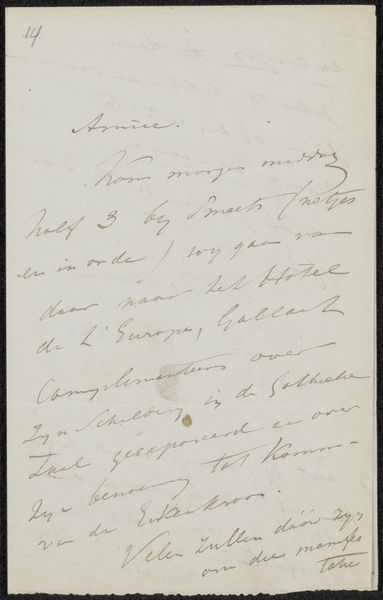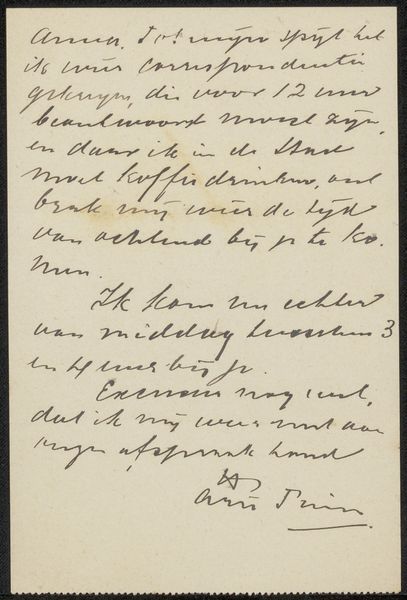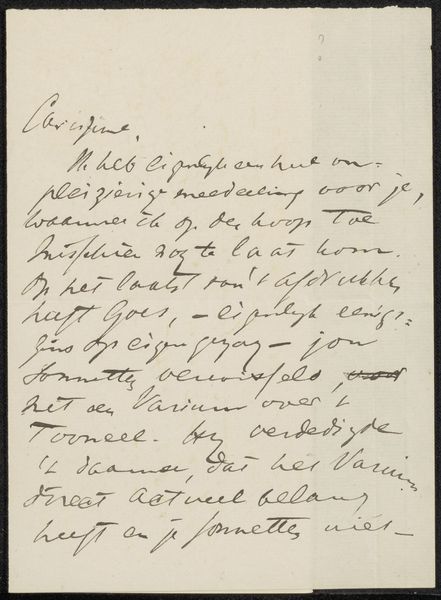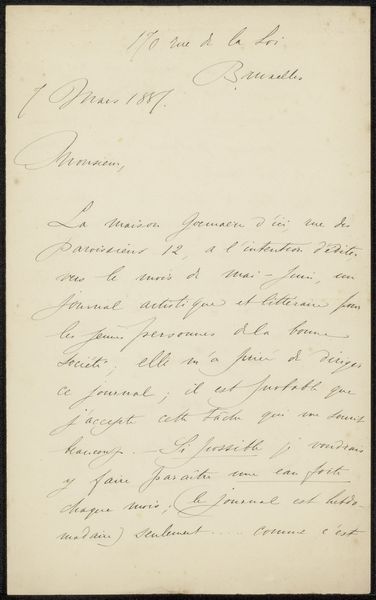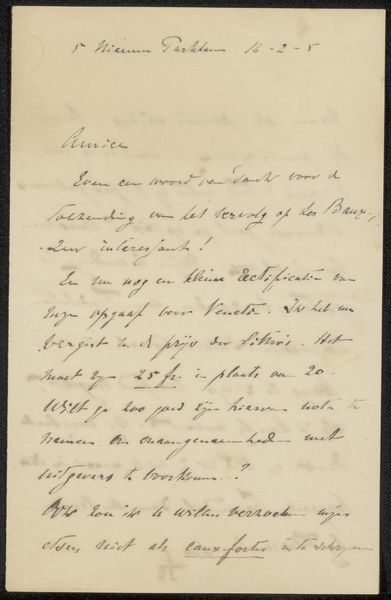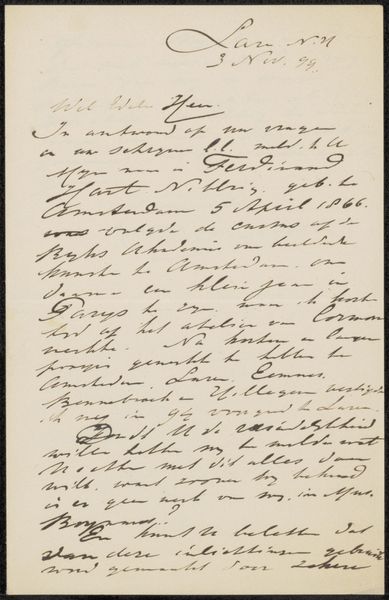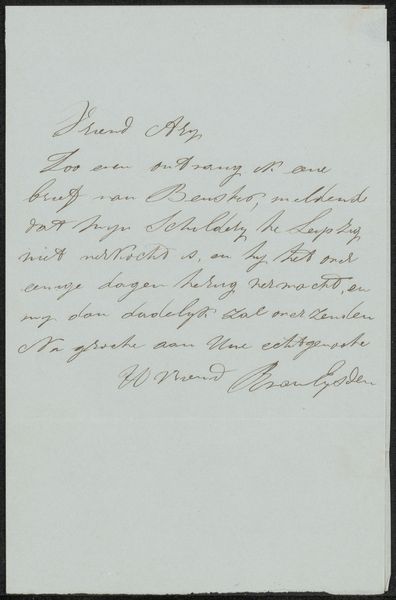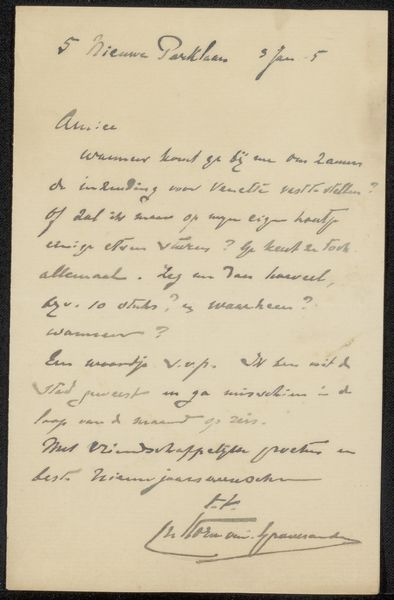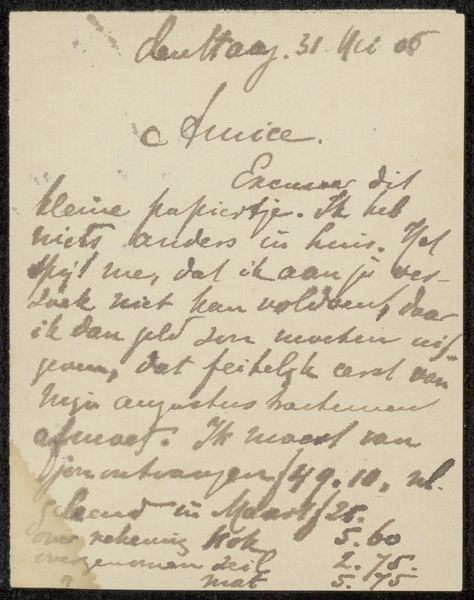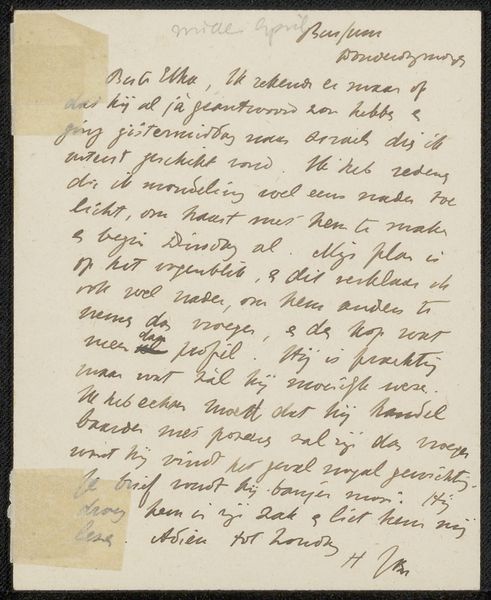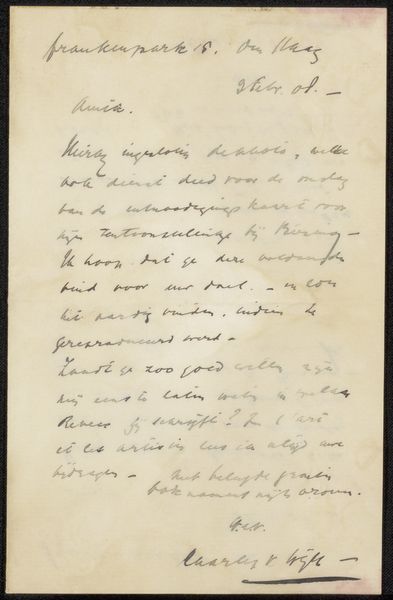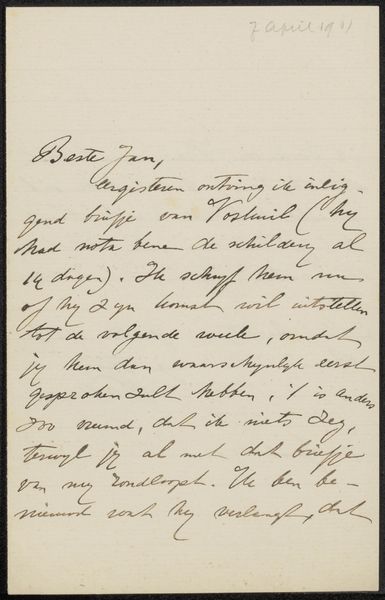
drawing, paper, ink, pen
#
portrait
#
drawing
#
hand-lettering
#
ink paper printed
#
hand drawn type
#
hand lettering
#
paper
#
personal sketchbook
#
ink
#
hand-drawn typeface
#
pen-ink sketch
#
pen work
#
sketchbook drawing
#
pen
#
sketchbook art
Copyright: Rijks Museum: Open Domain
Editor: So, this is "Brief aan Filippo Tessaro," created sometime between 1851 and 1907 by Matthijs Maris, and it’s an ink drawing on paper. It gives off a very personal, almost vulnerable feeling, like glimpsing someone's private correspondence. How do you interpret this work? Curator: It's fascinating to consider this letter as an object carrying not just information, but also emotional weight. Letters, you see, are inherently symbolic. They represent absence, delayed communication, a longing for connection. Think about the ritual of writing, sealing, and sending a letter. Editor: I hadn't thought of it as a ritual before, but I see what you mean. Curator: And the handwriting itself! The flourishes, the pressure, even the smudges – they’re all indices of the writer's state of mind, almost like a form of automatic writing, revealing more than just the intended message. Do you notice how certain words are emphasized, seemingly unconsciously? Editor: Yes, there are a few that seem to have more pressure applied with the pen. I wonder what that signals? Curator: Exactly. Now, considering Tessaro was the recipient, what emotions would this style of letter evoke in him? What's the cultural understanding around correspondence? How did these influence Maris? What do these layers say about our own way of processing this exchange, knowing so much of it is lost? Editor: It makes you think about how much we lose in digital communication, the nuances that just disappear. Curator: Precisely! This piece becomes a reminder of that loss, a symbol of the fading art of personal connection in a world increasingly mediated by technology. And that's why, even a seemingly simple letter holds such enduring power. Editor: I’ll definitely look at handwritten notes differently from now on, considering them more than just text.
Comments
No comments
Be the first to comment and join the conversation on the ultimate creative platform.
